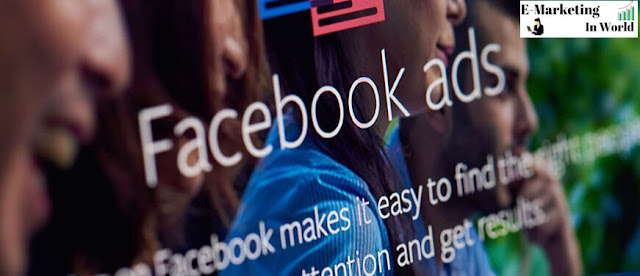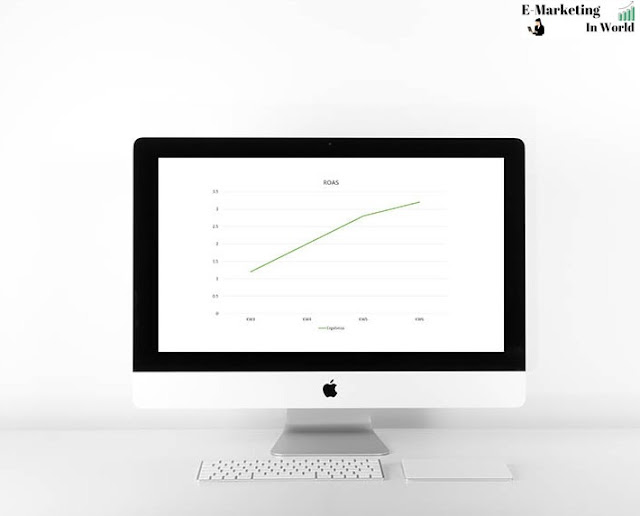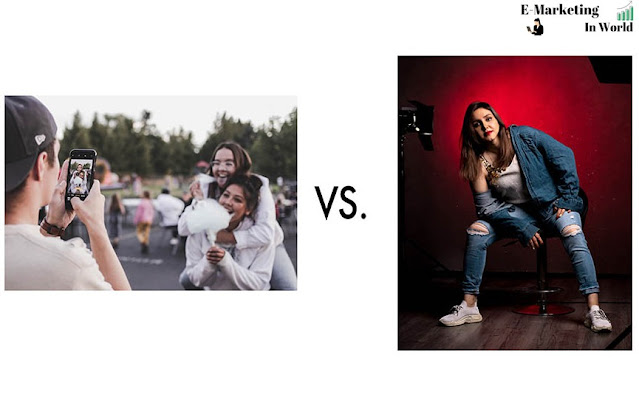 |
| Facebook Ads Content |
When it comes to campaign creation on Facebook, you as an advertiser are confronted with a wide variety of variables: Do you focus on a niche target group or a broad audience? What type of ad will you use? What should you put in the descriptions and headlines?
The content of the ads is crucial
“ Creatives are responsible for the largest contribution to sales (47%). “ Of course, the marketing and advertising industry has changed a lot in the last decade. Facebook in particular has collected a gigantic amount of data and has been able to greatly improve its algorithm. Accordingly, the topic of "target group expansion" became more and more interesting for advertisers, as they could count on a much more precise target group reach than on other platforms.
Still, a 2017 Nielsen survey found that content within ads was the largest contributor to revenue, as you can see in the chart below:
 |
| Facebook Ads Content |
The data boom that has swept the industry over the past decade is in large part responsible for the declining focus on advertising creativity. In particular, the segmentation of the target groups has been significantly improved. However, due to the IOS14 update and the imminent data breach on various advertising platforms, especially on Facebook and Instagram, this accuracy will most likely be restricted. Many advertisers have major concerns about these issues. So much more data can be evaluated.
The imagery used, the layout, the text, and the colors of the ad – to name just a few elements – are all meaningful data points, especially when combined with engagement data that allows us to understand which traits are high and low correlate performance.
A little tip at this point:
Analyze which of your organic social media posts stand out the most. Do no images or videos have greater engagement? Is there a recurring pattern? Take this information and try out some ads similar to your best organic posts.
Only focus on content?
The pictures and videos alone are useless if you don't find the appropriate target group who reacts positively to them. It is therefore necessary to take a closer look at the connection between the target group and the creative. The closer these two pieces of the puzzle fit together, the better the user experience on Facebook. It follows that Facebook rates your advertising better and you have a better chance in the internal bidding process.
In short: Your values and the probability of placing profitable advertising increases.
 |
| Facebook Ads Content |
Perhaps you have already tried out interest-based targeting on Facebook and tested different interests together. Some have worked well. Others, however, were unprofitable. The question at this point is: What did you or your team test at the ad level before discarding an audience and finding a replacement? Was it maybe just two very similar-looking pictures? No video or carousel? What if, for example, videos are much better received by the target group? You can't know that unless you test it.
Which content is “best”?
Facebook explains the following in the “ Facebook Blueprint ”: “The visual is the most important element of your ad. It's an eye-catching photo or compelling video that says something important about your business or product. It tells people what your brand is about. Such an image or video helps the user stop at your ad and engage with your content .”
This point is particularly important in social media advertising. Contrary to advertising on television, the user can simply continue to scroll or swipe on Facebook and Instagram without being forced to view the entire advertisement. But just like on TV, you need to know how your business stands out, differentiates itself, and ultimately attracts and keeps the customer's interest. Because advertising blindness, which occurs, for example, during commercial breaks on television, is also increasing on social media.
 |
| Facebook Ads Content |
A common point is a “too perfect creative”. It's reminiscent of the commercials on TV. Normally, people would pull out their cell phones at this point to bridge the advertising time. On social media, the content is simply skipped. This is then reflected in the advertiser's results.
Of course, this cannot be generalized so easily. Nevertheless, companies are increasingly showing authenticity and proximity to customers online, for example by posting more “ User Generated Content ” (UGC for short – which translates as “images/video created by customers”) on Facebook &; use Instagram.
The same applies here: This method can apply to your company, but it does not have to be. Carry out appropriate tests for your company and find the "sweet spot". There is no “one size fits all solution” in this case.
However, consumers are 2-4 times more likely (according to Hootsuite ) to consider user-generated content to be authentic than content that is mostly professionally created by brands. This offers brands an important credibility boost.
 |
| Facebook Ads Content |
Let's take this picture by user “photosbylancelee” (posted on the official Starbucks Instagram page) as an example. This user let his creativity run wild. In addition to the simplicity of this image, Starbucks is communicating one thing in particular: "No matter where you are or what you're doing, don't forget to treat yourself to your favorite Starbucks beverage first". Of course, you could have shot all of this with a couple of models in front of the waterfall. But that would have cost both time and money. Of course, this would have resulted in a higher quality image, but whether it can keep up with the authenticity of the creative client is another question.
Build trust. Whether it's a product, service, or experience. Modern consumers want to know what they are getting before they order. For example, 30 percent of millennials wouldn't go to a restaurant if the place's Instagram presence wasn't okay. They just don't trust the experience to be what they want.
Focus on emotions & benefits for customers
When developing a story for your brand, your main focus should be an emotional impact. The emotional impact is critical to creating a human connection. People are more likely to resonate with your brand if they can relate to it in some way.
Storytelling is not only a way to connect with your customers, but it also paints a clear picture of your brand by guiding the reader through your journey and leaving fewer questions. Creating a story for your brand also enables the ability to retain customers. When people can recognize and connect with your brand, they are more likely to remember your brand.
 |
| Facebook Ads Content |
A point that is essential in connection with emotions: clearly communicating advantages for the customer. If you don't address anything of the sort, even the hottest target group will rarely deliver the desired goals.
Three emotions are explained below that you can address with your company in the form of an image or video:
1. Empathy – is often confused with sympathy. Sympathy can be expressed as pity, whereas empathy is our ability to observe another person's experience and imagine what it would be like if we had that experience ourselves. Empathy in a Facebook video ad elicits a biological response. This helps your customers feel what it's like to use your product.
2. Humor – A funny ad can slow us down. Humor can help create a connection between your brand and your customers. According to an article in Psychology for Marketers, “We buy from people we like. Humor is the easiest and quickest way to get there.”
3. Inspiration – We all have an innate desire to live up to our ideal self-image. Advertising that targets innate desires, such as self-improvement, helps brands create stronger bonds with their customers.
How do you get user-generated content?
Do you already have a hashtag that is identified with your brand? If not, then a user only has the option to mention you and your brand with the Instagram business account name in the post. So think of a hashtag that fits your brand and establish it on the platforms. Alternatively, there is the possibility of encouraging people to use a specific hashtag.
With a UGC hashtag contest, you can encourage followers to share content on social media using a hashtag of your choice. Users can share content like photos and videos using that particular hashtag to win prizes.
 |
| Facebook Ads Content |
By using specific hashtags and popularizing them, your followers can trend your hashtag. In addition to the content that is produced as a result, this can help to increase engagement with your target group, increase brand awareness, and ultimately also organically increase sales.
Create hashtags that are easy to remember and not difficult to spell to ensure success. It's also important to use hashtags that differentiate your brand from your competitors and incorporate your branded hashtag into all your posts.
Popular fashion designer Marc Jobs, for example, explained that his company would cast the model for its next advertising campaign via social media platforms Twitter and Instagram. Users wishing to participate had to post an image on Instagram or Twitter with the hashtag #CastMeMarc. The contest was extremely popular and within 24 hours there were 15,000 hashtag entries.
How about your existing customers? Do you already have an email list of clients to target? If so, use this list. A simple example of an email-based hashtag campaign is the company “oVertone”, which is an email that encouraged users to post the purchased products in action.
Given the tens of thousands of posts under the hashtag #OVERTONE, it cannot be denied that customers wanted to be part of the brand on Instagram even without specific incentives. With the possibility of being mentioned in a “ repost ” or another campaign in the future.
As soon as you have this content, you go through the individual posts and choose which content from the different users best suits your brand. Write to users either privately or under their social media posts about how pleased you are with the post and that you would like to use it in your next advertising campaigns. If the user agrees, you and your brand have additional content that you can test in your Facebook and Instagram campaigns.
Here is a short example of text that you can use to ask a user for permission. The text refers to the post under which you or your team is replying.
The content of the square brackets should be individual:
“Hi [@username]. We love the photo/video and would love to use it on our social media, page, or emails in the future. If you agree, reply to #[custom hashtag] to officially give us your consent. Many Thanks!"
A proven scheme for the individual hashtag in the message is to connect your company name with the word "JA" or "yes". For example, the Instagram account “becolorstreet” uses “#yescolorstreet” in this case. When you ask for permission, you show the original user that you value their content. In addition, you keep yourself largely out of copyright issues (but there is no complete guarantee here).
Conclusion
Put a clear focus on the creatives in the different tested audiences. Which image, video, or carousel suits which target group? Don't give up on an audience just because a creative or two didn't work. We at MartonMedia also only start with assumptions and test until we have found stable, profitable images/videos in the corresponding interests and scale them.
For example, set a rule that you or your team must try at least two different images, videos, and carousels for an interest or lookalike before you classify it as a (for now) failure. Filter out the best connections and focus the bulk of your budget on them. It also makes sense to test the “losers” again later, when your brand is a bit bigger.


Comments
Post a Comment